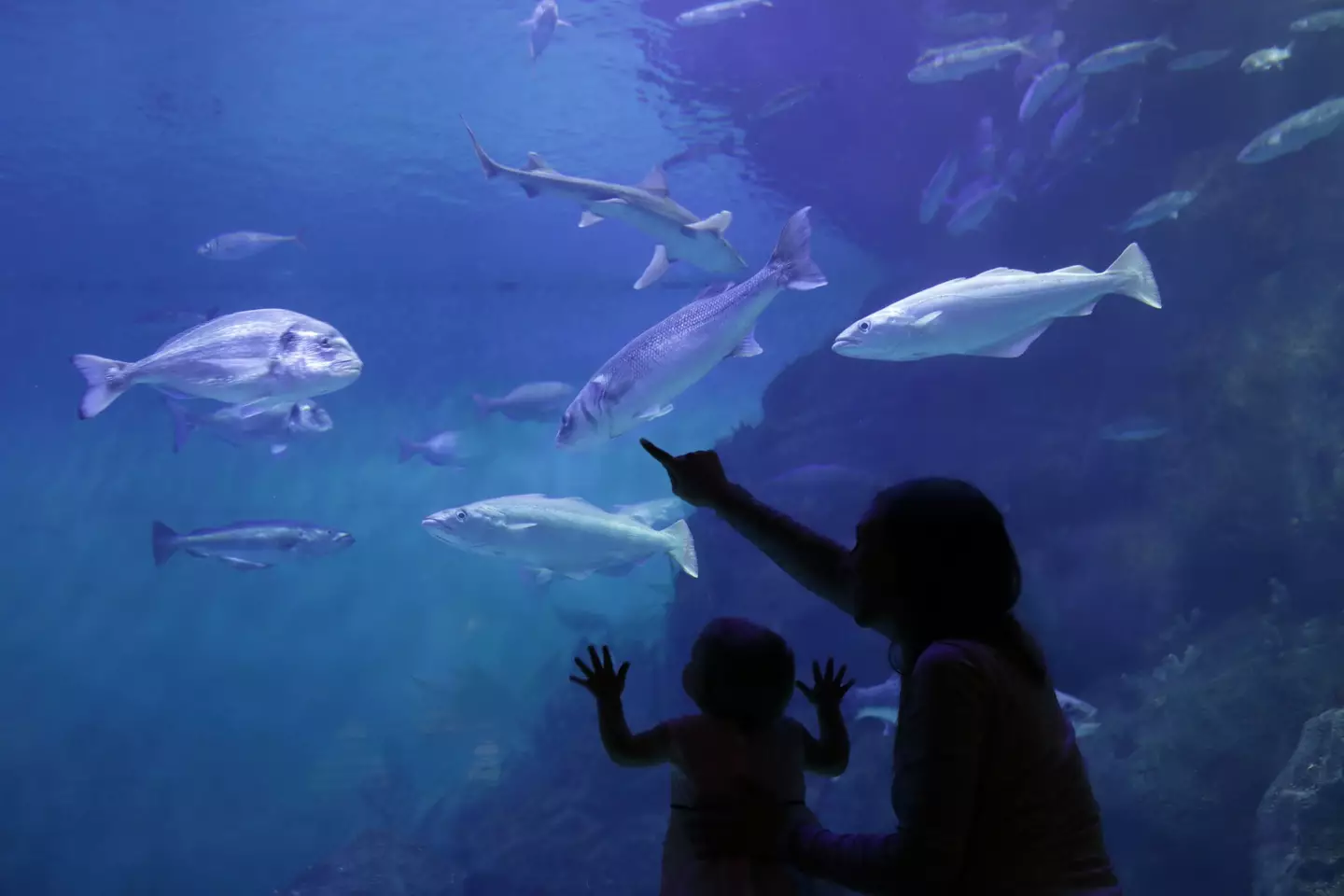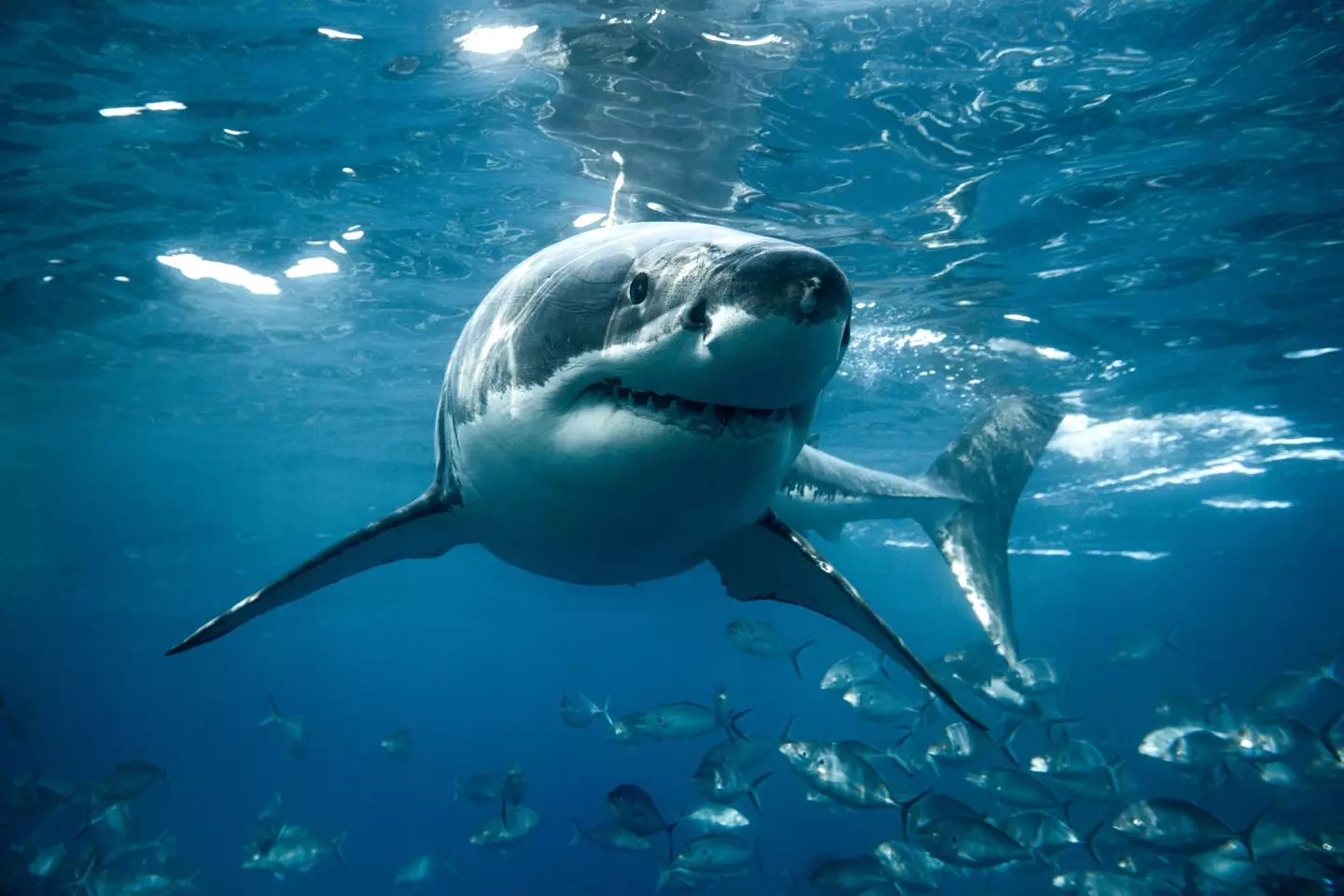Featured Image Credit: Stephen Frink/Cat Gennaro/Getty Images
Have you ever noticed that aquariums never have any great white sharks? Well, there’s a good reason why.
Sometimes, you need a day out to your local aquarium – if you have one, of course.
But, while you’re likely to spot everything from dolphins to jellyfish to giant sea turtles on a day out at a sea life attraction, one animal that you’re guaranteed not to come across is the great white shark.
While they’re a similar size – if not smaller – than some of the other sea creatures on display, there’s a heartbreaking reason why they’ll never be held captive.
That is because when a great white shark is held in captivity, they always tend to die.
The first recorded incident was in 1955 at Marineland of the Pacific, a former public oceanarium and tourist attraction in LA – but the shark didn’t last a single day.
And over the decades, a series of attempts have been made but to no avail – the great whites have all been either released into the wild or died within days in captivity.
The longest record was held by The Monterey Bay Aquarium, which is known as the first to successfully care for and display great white sharks.
It is the only public aquarium in the world to have successfully exhibited a great white shark for longer than 16 days, but even that wasn’t without its problems – with one young shark dying shortly after being released into the wild.
So, what’s the problem?

Sea life attractions are home to many amazing marine animals but great white sharks aren’t one of them (Getty Stock Photos)
First up is their feeding habits as this particular species is carnivorous and tend to only eat live prey, including tuna, rays and other sharks or feed off the carcasses of other animals, like dolphins, porpoises and whales.
They also like to snack on seals, sea turtles, otters and birds.
Therefore, it’s incredibly hard and expensive to satisfy the dietary needs of this species.
There’s also the issue of traumatizing visitors by dropping live seals and dolphins into the feeding frenzy.
What’s more, great whites are nomadic and huge, and they cannot stop suddenly or swim backwards.
They need to move forward in order to breathe, as vast amounts of water rushes through their open mouths and out of their gills.
Considering they can grow up to 6.1 metres in length, you’re going to need a bigger tank than usual to house these creatures.
Once again, the costs of achieving this are going to be astronomical.

Great white sharks are known to die within days if kept in captivity (Getty Stock Photo)
Last but definitely not least, great whites suffer in captivity, so much so that many of the recorded incidents led to the animals refusing to eat and dying of starvation.
According to Shark Bookings, which offers shark diving experiences in South Africa: “Great White Sharks that are kept within tanks have been known to head butt their noses into the glass walls and lose their appetites.
“It has also been noted that they get increasingly aggressive in their depressed state.”
With that in mind, we’re happy to let Jaws continue roaming free in big blue sea.
Topics: Animals, Shark

Dr. Thomas Hughes is a UK-based scientist and science communicator who makes complex topics accessible to readers. His articles explore breakthroughs in various scientific disciplines, from space exploration to cutting-edge research.








